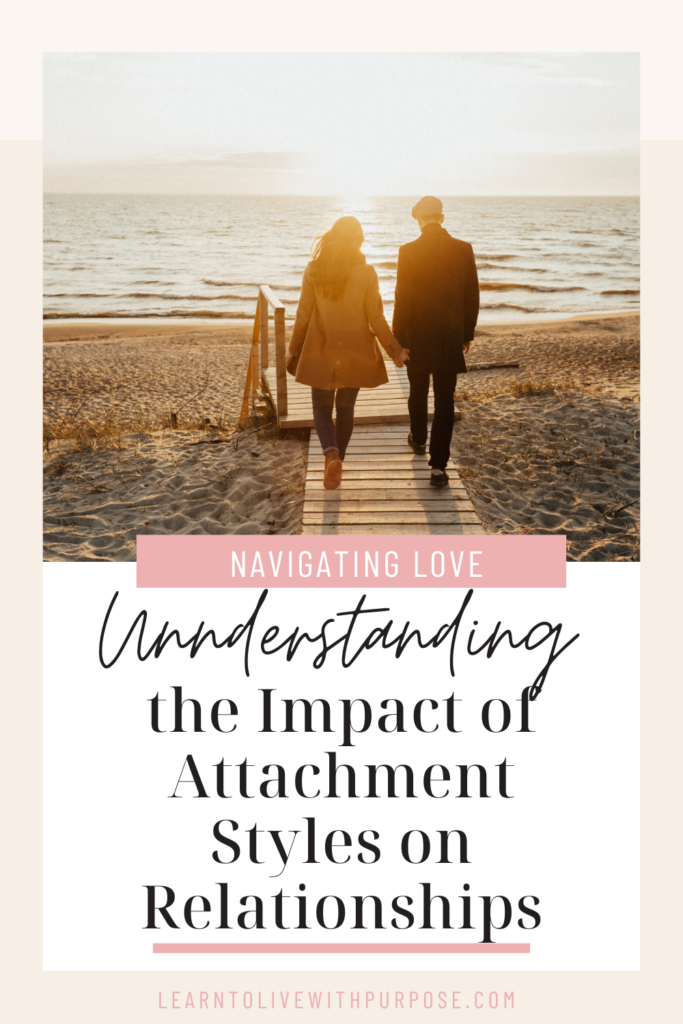In the complex dance of human relationships, understanding attachment styles is akin to unravelling the intricacies of our emotional connections.
Attachment theory, developed by psychologist John Bowlby, explores how our early experiences with caregivers shape our expectations, behaviours, and beliefs in adult relationships.
In this blog post, I will delve into the four attachment styles—secure, anxious-preoccupied, dismissive-avoidant, and fearful-avoidant—and examine how they can significantly impact the dynamics of your relationships. ✨
1. Secure Attachment Style: The Foundation of Healthy Relationships
Individuals with a secure attachment style generally had caregivers who were consistently responsive to their needs during childhood.
This sense of reliability and trust translates into secure adults who feel comfortable with intimacy and autonomy. In relationships, those with a secure attachment style tend to form strong emotional bonds, communicate openly, and navigate conflicts effectively. They are more likely to seek and provide support, fostering a sense of safety and security for both partners. 😊
How it Affects Relationships:
- Positive Communication: Secure individuals are generally adept at expressing their needs and emotions. They create an open space for their partners to do the same, promoting healthy communication.
- Emotional Support: Secure individuals are comfortable with emotional intimacy, making them reliable sources of support for their partners during challenging times.
- Trust and Commitment: Due to a positive early caregiving experience, those with a secure attachment style tend to trust more easily and are more committed to maintaining a stable relationship. ❤️
2. Anxious-Preoccupied Attachment Style: Seeking Reassurance and Affection
Arising from inconsistent caregiving during childhood, the anxious-preoccupied attachment style is characterised by a constant need for reassurance and fear of abandonment.
Individuals with this attachment style often worry about their partner’s feelings, leading to heightened sensitivity to perceived threats in the relationship. They may be perceived as clingy or overly dependent, seeking constant validation and approval. 😣
How it Affects Relationships:
- Intense Emotional Expression: Anxious-preoccupied individuals are prone to heightened emotional expression, seeking continuous affirmation of their partner’s love and commitment.
- Fear of Abandonment: The fear of rejection or abandonment can lead to moments of insecurity and overanalysing behaviors, potentially causing strain on the relationship.
- Communication Challenges: While expressive, anxious-preoccupied individuals may struggle with effective communication, as their fears can sometimes override rational discourse.

3. Dismissive-Avoidant Attachment Style: Independence and Emotional Distance
Individuals with a dismissive-avoidant attachment style often experienced caregivers who were emotionally distant or inconsistent in responding to their needs. 😥
As a result, these individuals have learned to downplay the importance of emotional intimacy and may value independence and self-sufficiency. They may appear emotionally distant, avoiding deep emotional connections and expressing discomfort with vulnerability.
How it Affects Relationships:
- Difficulty Expressing Emotions: Dismissive-avoidant individuals may find it challenging to express their own emotions or respond empathetically to their partner’s emotional needs.
- Tendency Toward Independence: Independence is highly valued, and these individuals may struggle with the idea of relying on others or being relied upon in the context of a relationship. 😭
- Fear of Intimacy: Emotional intimacy may be perceived as a threat, leading to a preference for maintaining distance and avoiding deep emotional connections.
4. Fearful-Avoidant Attachment Style: A Balancing Act of Push and Pull
Individuals with a fearful-avoidant attachment style often experienced inconsistent caregiving, with moments of responsiveness and neglect.
This unpredictability can create internal conflict, leading to a fear of both intimacy and abandonment. Fearful-avoidant individuals may oscillate between a desire for closeness and the need for space, making relationship dynamics complex. 🫂
How it Affects Relationships:
- Ambivalence Toward Intimacy: Fearful-avoidant individuals may desire closeness but fear the vulnerability that comes with it, leading to a push-and-pull dynamic in relationships.
- Difficulty Trusting: Trust issues can arise due to past experiences of inconsistency, making it challenging to fully trust a partner’s intentions or commitment.
- Need for Independence: Similar to the dismissive-avoidant style, there is a desire for independence, but this is often counteracted by a simultaneous yearning for connection. ❤️

Navigating Attachment Styles in Relationships:
Understanding your own attachment style and that of your partner is a crucial step in building healthy and fulfilling relationships. Here are some strategies to navigate the impact of attachment styles:
1. Self-Reflection:
Take time to reflect on your own attachment style. Understanding your patterns of behavior and emotional responses provides insight into your needs and potential challenges in relationships. 🔥
2. Open Communication:
Foster open and honest communication with your partner about attachment styles. Discussing your emotional needs, fears, and expectations creates a foundation for mutual understanding.
3. Empathy and Compassion:
Approach your partner with empathy and compassion, recognising that attachment styles are deeply rooted in early experiences. Avoid judgment and work together to create a supportive environment. 💕
4. Seeking Professional Guidance:
If challenges persist, consider seeking the guidance of a therapist or counselor. Professional support can provide valuable insights and tools to navigate attachment-related issues. You’re not alone.
5. Building Secure Attachments:
Focus on creating a secure attachment within the relationship. This involves consistent emotional responsiveness, trust-building, and effective communication. Foster an environment where both partners feel safe to express their needs and vulnerabilities. ❤️
6. Individual Growth:
Encourage personal growth and self-awareness. Individuals with insecure attachment styles can work towards developing more secure patterns through introspection, therapy, and intentional efforts to challenge maladaptive behaviors.
Conclusion
Attachment styles serve as blueprints for our emotional connections, shaping the way we approach and experience relationships. By recognising the impact of attachment styles, whether secure, anxious-preoccupied, dismissive-avoidant, or fearful-avoidant, we gain valuable insights into our own behaviors and the dynamics of our relationships.
Navigating these attachment styles requires self-awareness, open communication, and a commitment to fostering secure attachments. 🥰
In the journey of love, understanding and embracing the complexities of attachment styles can pave the way for deeper connections, healthier communication, and more fulfilling relationships. As we unravel the intricacies of our emotional bonds, we discover the power to transform patterns, create secure attachments, and build a foundation for lasting and meaningful connections.
Pin this post for a reminder 📌 👇

Related Blogs
Things to Say “No” to for you to Live a Happier Life
How to Stop Settling For Less Than You Deserve
How to Become the Best Version of Yourself: A Guide For 20-Somethings
+ show Comments
- Hide Comments
add a comment